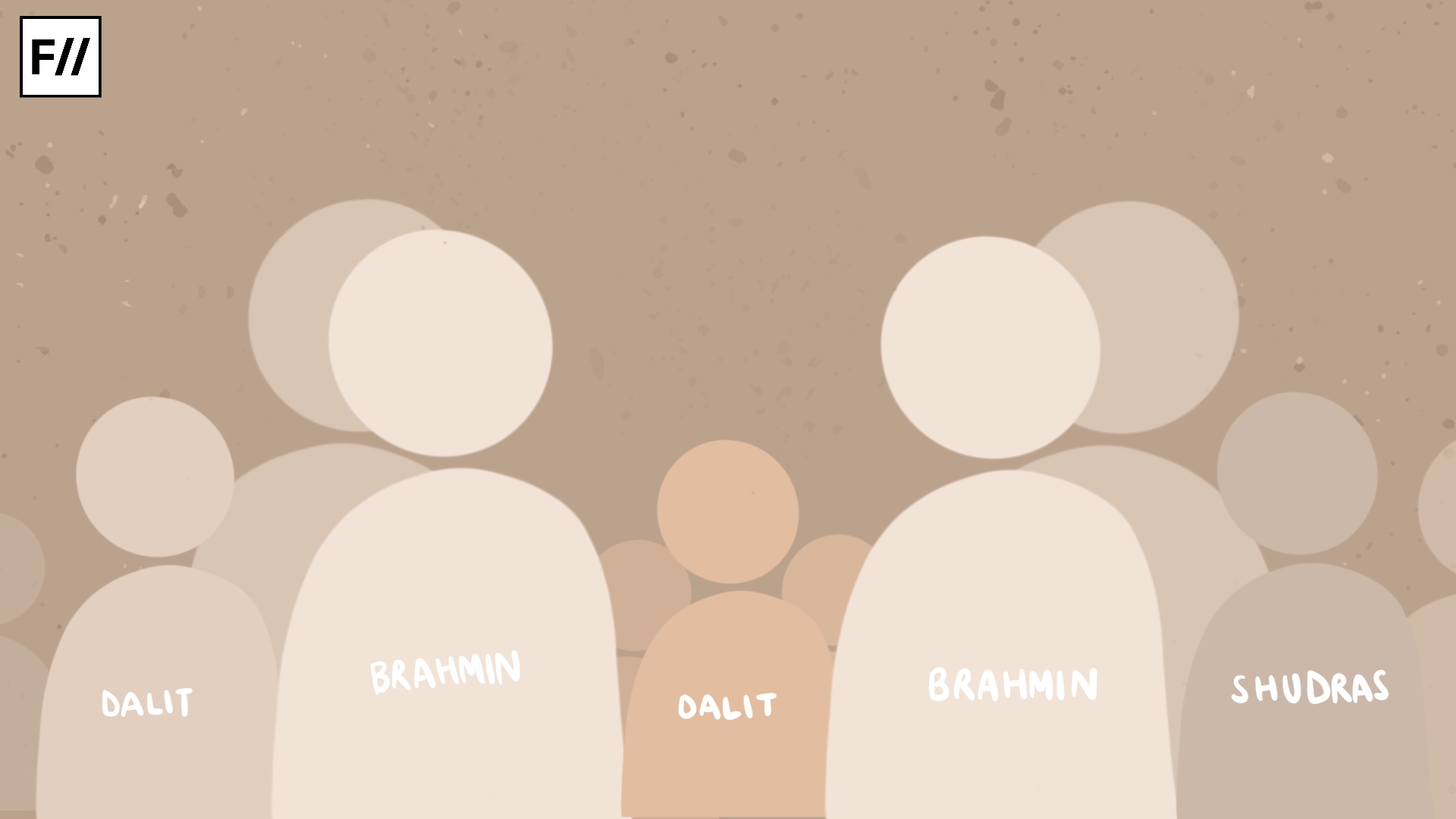Sometime back, students at NALSAR University receive a mail informing us about a call for applications for Editorial Board Selection or an Organizing Committee of an event. Interested individuals apply to be a part of it and a few weeks later they get the result in a mail stating the names of the selected individuals. A practice that has probably been happening for years.
But the problem with this is that we may have never consciously registered a major problem that exists in this system of selection. The entire system of selecting students this way is very opaque and the consequences that it comes with are far-reaching in terms of inclusivity on campus for the backward classes.
Save for one or two instances (Interrobang, Call for Editors by the Antitrust and Competition Law Blog) we are never told who is vetting these applications. What the selection criteria is, how the applications are being awarded points, which parts of the application are being given weight, how much weight and so on and so forth.
After the results are announced, we do not get to see any of the applications of the accepted candidates let alone all the applications that came in, or know who all applied and who all got through and why. All we get during this entire process is a mail about how to apply and what all we have to include in our application, followed by extension of deadlines and then a reminder to submit the application.
Post which, lo and behold, we have our results. There is hardly ever any process to find out how the people who got selected actually got selected. The people involved in the process do not know how and why they might have gotten rejected or accepted. Thus no one on campus knows what they are doing right or where they are going wrong.
Out of 65 students, 3 Scheduled Tribe students and 4 Scheduled Caste students were selected.
In a lot of cases, there may be clear instances of favouritism being practised and we may not even know about it. We as a college do not get to know the credentials of the people who are carrying out big events like B.R. Sawhney, Interrobang, NALSAR IV, Carpe Diem, Selection ADR, etc for us.
These are events that have a lot of prestige attached to the college and it sees a lot of guests coming from across the country. We are sometimes just supposed to trust the people who win elections and that in itself can be very problematic.
The problem about inclusivity in our college is quite obvious when you analyze just the data that is available on mail over the past one year. There were 65 students last year who filled up many different posts across in college bodies. The data gets very interesting here.
These 65 students were selected for Interrobang, Carpe Diem, ELPR Board, Mediation and Negotiation Selection, Public Policy Group, Competition and Anti Trust Law Review Blog, NALSAR IV, TechLAW Forum and the CCTV Committee. Out of the 65 students, there were all of 3 students from the Scheduled Tribes category and 4 students from the Scheduled Caste category who were selected.
Also Read: Law School And The Myth Of Neutrality
Thus our inclusive liberal college that practices no form of evident caste and tribe discrimination only has 4.6% of its selected posts being filled up by ST category students and 6.1% of the posts being filled up by the SC category students. Thus a staggering and impractical, 89.3% of posts were filled up by the general category students.
If we dig a little deeper we stumble upon another major problem. From the third year and above, there are only 2 people, both Scheduled Tribe students who have been selected for a post.
This leads us to a major problem that backward class students often end up facing in our college – building a CV. When in the first and second year, you do not get selected for such posts, eventually your CV becomes comparatively bad and thus in your senior years, you do not get selected for many posts and jobs for having a weak CV.
But that weak CV is very much a part of the many subtle forms of discrimination that the backward class students have to face in our college. One might argue that they don’t get selected in their initial years because they already had a weak CV from school and thus better candidates deserve it.
I have two arguments to counter that – A) these are backward class students who come from underprivileged backgrounds. I am sorry if they couldn’t afford to participate in your expensive suit ridden Model UN conferences back then. Why should they bear the brunt of that in a college that claims to practice no forms of discrimination? B) How are you even sure that it is not a result of direct discrimination in a system that is more opaque than the walls around NALSAR?
When the CV becomes comparatively bad, you do not get selected for many posts and jobs.
So what is the way out of this problem? The only way is to increase the transparency. Let the student body know who is vetting the applications, how they are being vetted, which part of the application has how much importance in terms of weight. Make the person who is vetting these applications answerable to anyone who wants to ask them how/why someone got selected/rejected.
Release the score sheet that led to the selection of the candidates. These are all procedures that are followed when results are announced in competitions in our college. We can get to know who the judge is, why the winning team wins, we can always approach the judges asking for feedback and know exactly how we are getting marked and scoresheets are either publicly available or made available to the people involved in the competitions.
There should be no reason why other forms of competition like posts of almost all the Editorial Boards, the Forums and Policy Groups and the OCs of all events be above all this and become some sort of a hegemony in the hands of the people who are already in control of them, either through previous selection procedures or elections. To counter the problem of having a weak CV when entering the college, there must be other criterions developed for selection rather than just a CV.
Thus the liberal and non-discriminatory garb of NALSAR University can easily be shattered by a few searches on your mailbox and a few searches on Google to get the CLAT ranks of all individuals across batches. Regarding the latter, I know they aren’t supposed to be publicly available for its discriminatory nature but after coming to NALSAR University, I found that if one looks at the right places closely, there is simply an abundance of discrimination.
Thus the liberal and non-discriminatory garb of NALSAR University can easily be shattered by a few searches on your mailbox and a few searches on Google to get the CLAT ranks of all individuals across batches. Regarding the latter, I know they aren’t supposed to be publicly available for its discriminatory nature but after coming to NALSAR University, I found that if one looks at the right places closely, there is simply an abundance of discrimination.
Also Read: NALSAR University Of Law: Sexism & Casteism Behind A Liberal Facade
Featured Image Credit: People Factor Group





Hey Kumarjeet, good job on pulling the data. Do you have data on how many students from SC/ST applied to these posts? Since the specific argument you are making is on the unfairness of selection process rather than the general lack of participation by students from these categories ( due to numerous reasons, including the elitist bearings of some of these activities), I feel the number of students who applied from these categories is a very relevant statistic as regards your argument.
Also, the article is factually incorrect in as much as it says the Editorial Board Tests do not reveal who is evaluating the test and exclude the metric of evaluation. I know for a fact that NSLR and NILJ do mention who judged the tests and also provide the metric of evaluation and assignment of marks with respect to each metric. Aside from the excellent credentials of the individuals who judge these tests, it needs to be mentioned that unless someone from the Board reveals the identity of the test taker there is no way the judges can know the name of the test-taker let alone Caste status. My limited point here is with respect to Editorial Board tests. I do agree that there is a lot of leeway with respect to committees such as Public Policy, Carpe Diem etc : perhaps the organizers should take note of your concerns and come up with objective markers of evalution so that such committees are not run as the personal fiefdoms of specific seniors.
Its surprising that there has been no engagement by the author on some of the comments here which directly call into question some of the central arguments made. Its one thing to get published but another thing to be able to answer questions.